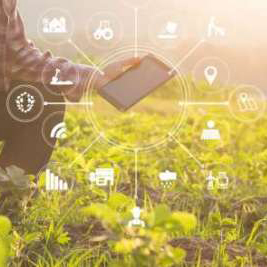Digital and data-driven innovations, applications, and platforms are promising to overcome long-standing market and policy failures and accelerate the transformation of the agriculture and food system. In many countries, digital and data-driven innovations and applications in agriculture and food systems emerge and deploy. They range from full-fledge digital ecosystem building to more focused components such as, digital advisory and E-extension, Big Data for e-market platform, E-voucher, Digitalization of value chain data, farmers digital registry, fintech, weather advisory, digital services that increase farmers' access IoT based mechanization, solar-powered irrigation, precision agriculture, and food safety and traceability. They help to increase farm efficiency, support more equitable access to markets across the value chain and improve environmental sustainability in the agrifood sector. Digital technologies are becoming a prominent tool within The World Bank operations, with examples of innovations and applications in all aspects of agriculture and the food value chain. Currently, The World Bank has 53 lending investment projects in 36 countries with 1.15 billion USD investments in Data and Digital Components related to agriculture and food systems, influencing an investment of about 10.7 billion USD.
In this context, it is critical that we build awareness and share knowledge across World Bank staff, interested global audience, and policymakers about how data-driven and digital technologies can be a tool to support a range of operations, but also about the new type of operations needed to support the development of a thriving digital ecosystem for the agriculture and food sectors.
This virtual knowledge exchange is intended to provide informative examples and discussion regarding innovative solutions, business models, and approaches in Data-driven Digital Agriculture. The information presented and examples highlighted are aimed to help policymakers and practitioners consider how they can assess Agriculture and Food Systems project options and adopt decisions tailored to their country’s circumstances and needs.
Enroll here

